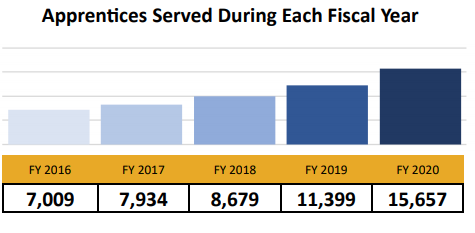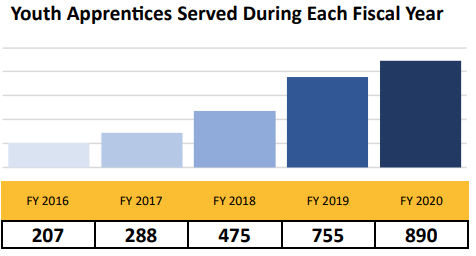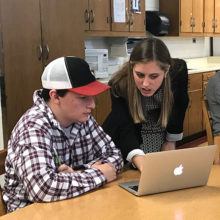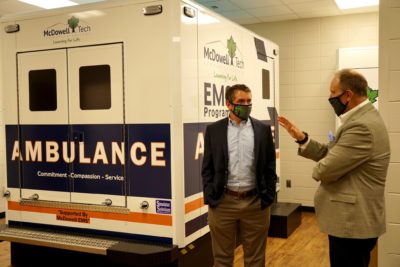

The State Board of Community Colleges held its first meeting on Friday since the transition of Peter Hans, now the president of the UNC System, and the appointment of Bill Carver as interim president of the N.C. Community College System. The meeting also came on the first week of the fall semester — one that is marked by the impact of COVID-19.
“As we look forward, we know that this is a time like no other,” said Kandi Deitemeyer, president of Central Piedmont Community College, during her address to the State Board as the incoming head of the Presidents’ Association. “There is no roadmap for our colleges, no playbook of how to start a fall semester during a pandemic, no certainty about the unprecedented economic swirl.”
“We stand ready to provide the reskilling and training North Carolinians will need to restart their careers, and in some cases, rebuild their lives,” she continued.
The State Board covered a number of topics, including the allocation of $15 million in scholarships for workforce training from the Governor’s Emergency Education Relief (GEER) fund. They also discussed the dip in enrollment colleges are seeing this fall — something they are not used to during economic downturns.
“None of our instructional models have been immune from the effects of the pandemic,” Deitemeyer said. “Enrollment declines are affecting curriculum, basic skills, and continuing education programs for a variety of reasons.”
Deitemeyer and others shared that they hope enrollment for shorter programs, such as eight or 12-week courses, will increase. However, they are concerned about the impact of enrollment declines on their budget as well as the added costs for technology, personal protective equipment, sanitation, and more.
“I would offer that the word for the year is grace,” Deitemeyer said in closing.
State Board approves $15 million in scholarships for workforce training
On Aug. 12, Gov. Roy Cooper announced $95.6 million for K-12 and postsecondary education as part of the Governor’s Emergency Education Relief (GEER) fund through the federal CARES Act. The community college system will receive $15 million.
“That’s a call to action for our community colleges and also a vote of confidence in our ability to serve the state,” said Carver.
Of the $15 million, $14,549,996 will go to scholarships for students in “short-term workforce training programs leading to a state or industry-recognized credential in a high-demand field.” Students must be enrolled in one of 10 programs, although colleges will have flexibility to add other programs to meet local workforce needs. Those programs are:
- Automotive
- Aircraft Maintenance
- Construction
- Criminal Justice
- Emergency Medical Services
- Healthcare
- Industrial/Manufacturing
- Information Technology
- Transportation
- Fire and Rescue Services
The remaining $450,004 will go to colleges in each of the eight prosperity zones for marketing and communications around this opportunity.
Elizabeth Grovenstein, vice president and chief financial officer for the system, noted that while the colleges have received CARES Act funding, that funding was restricted to curriculum students. “So that leaves out a large number of our students,” she said, “since we support students in short-term workforce, high-demand programs.” The GEER funding specifically goes to those students, she highlighted.
The State Board approved the allocation of these funds to all 58 community colleges. The document below shows the amount each college will receive on pages 3 and 4.
Statewide CCRG implementation delayed until spring 2021
Starting this spring, high school seniors with an unweighted GPA between 2.2. and 2.8 are required to take remedial math and English courses during their senior year.
This program, called Career and College Ready Graduates (CCRG), is the result of a bill passed in 2015 (S.L. 2015-241, Section 10.3) requiring the State Board of Community Colleges, in consultation with the State Board of Education, to develop a program that “introduces the college developmental mathematics and developmental reading and English curriculums in the high school senior year and provides opportunities for college remediation for students prior to high school graduation through cooperation with community college partners.”
The initial legislation called for full implementation of CCRG courses by the 2016-17 school year. However, subsequent legislation pushed the deadline for implementation back first to 2018-2019 and then to 2020-2021.
Statewide implementation has been pushed back yet again to the spring due to COVID-19 and issues with the procurement of the platform, according to Kim Gold, senior vice president and chief academic officer at the system office.
“The intent is to deliver developmental mathematics, developmental reading, and English curriculum in the high school during their senior year for those who may not be quite college ready and provide for that remediation prior to their entry into the community college system,” said Gold.
Students will take these courses on a platform called EdReady from NROC. The courses are mastery-based, meaning students take a series of tests to demonstrate mastery as they work through the content. If students do not pass the required tests by the time they graduate high school, they can continue at community college. That is one of the reasons the community college system and the Department of Public Instruction (DPI) chose the NROC platform, Gold said.
Students can place out of these courses with a qualifying ACT, SAT, or End-of-Course (EOC) score. They can also place out with a college GPA above 2.8 and at least six credits in approved college classes.
According to Susan Barbitta, executive director of student success at the community college system, DPI purchased NROC memberships for all 9th through 12th grade students at a cost of $469,000.
“They made that decision to include all students, to the best of my understanding, and not just seniors,” Barbitta said, “so that students that were demonstrating early on and were having some challenges or their teachers felt perhaps they were falling behind a little bit could begin to enter these courses on their own and begin to work through them.”
Board member David Willis asked how the CCRG courses are different than the traditional high school English and math curriculum. Barbitta said the English CCRG course will be embedded within English 4 and will reinforce what students are learning. The Math CCRG course, however, is different than the traditional high school math courses.
“It is very remedial in nature,” Barbitta said. “It does really start with the basics, you know, adding fractions with unlike denominators, solving basic algebraic equations, basic geometry. So it’s sort of a compilation of the key skills that should have previously been learned in the existing courses, but perhaps students had gaps and didn’t necessarily learn all of those.”
The community college system will use a train-the-trainer model to deliver professional development to K-12 teachers this fall.
“What we would hope to see is that students coming into the community college who have taken these courses are demonstrating a higher level of success in their college-level work than previous success rates,” Gold said.
For more on CCRG, see this report from the State Board’s February 2020 meeting.
Apprenticeships up 37% this year
Since ApprenticeshipNC became part of the community college system in 2017-18, the number of apprentices has increased by 80%, according to the annual report shared at the State Board meeting. Over 15,000 youth and adults served as apprentices in fiscal year 2019-2020, a 37% increase from the previous year.


“This report is truly a reflection of the support that the apprenticeship team has received through not only the system office but then also our 58 community colleges,” said Maureen Little, vice president of economic development at the system office.
The majority of apprentices served in public safety (29%), construction (18%), healthcare (14%), energy (14%), and advanced manufacturing (13%). Little said she expects apprenticeships in IT and healthcare to grow given the impact of COVID-19.
The number of youth apprentices grew 18% in 2019-20. Youth apprentices start in high school and receive a tuition waiver to enroll in community college after graduation.


Other issues
The State Board extended four temporary amendments to give colleges more flexibility related to COVID-19. Three of these amendments allow colleges flexibility in using instructional technology fees, student activity fees, and bookstore revenues. The fourth extends the flexibility colleges have in making up instructional time from adverse weather events to emergency events.
Finally, Mary Shuping, director of government relations at the system office, shared that the North Carolina Senate may appoint a replacement State Board member to fill the current vacancy during a special September session.




